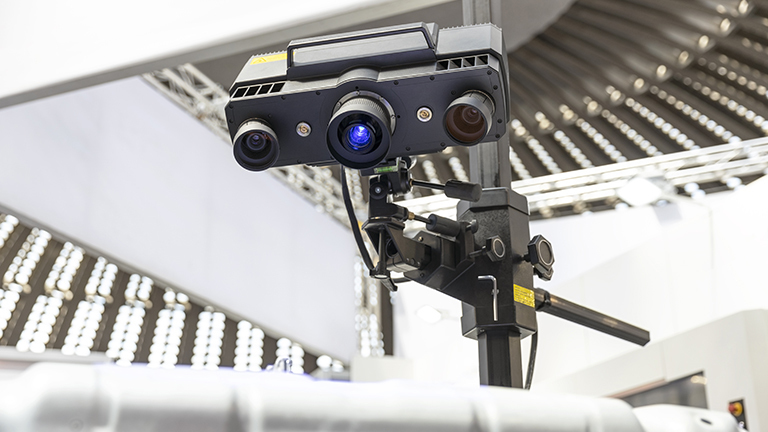AI-based image recognition does the hard work

It takes time to look at an image and decide on an action. Machines look at digital images much faster than people, but they need to understand the content. Artificial intelligence (AI) is making that possible.
Computer vision is a big topic. Image recognition restricts itself to detecting objects in a still image or a frame in a video. Objects are real, like a bottle or a dog, rather than abstract, like bad weather or danger. Detecting real objects is relatively simple and although AI has limitations, object detection and classification is quick and accurate.
You already use AI
It isn’t always obvious when you are using AI. It is now a mature technology used by large organizations everywhere. Some examples of how we use AI-based image recognition in everyday life include:
- Social media companies use image recognition to audibly describe what is in a picture to visually impaired users.
- Search engines use images to identify objects and locations, such as bridges.
- Apps use images instead of text to search for products, retailers and brands.
But AI isn’t limited to large organizations with deep pockets and big databases. Any IoT application can use AI and machine learning to add useful features.
How AI makes IoT better
Reducing human effort is one of the main values of AI. Identifying objects in images requires a lot of mental acuity. AI-based image recognition is relieving user effort and increasing productivity in these ways:
- defect detection
- quality checks
- alignment
- assembly
- welding
AI visually inspects work areas or equipment to check safety or for damage. Heavy industries use image recognition to detect machine wear. It also sees corrosion on infrastructure like pipes, storage tanks and even vehicles.
Using image recognition creates a history of detail. Stored images get tagged with the date, location and status. AI analyzes the database to predict maintenance or replacement.
 Example applications for AI-based image recognition
Example applications for AI-based image recognition
Object detection in vertical industries
Using AI to detect objects in images is possible in all vertical industries. These expert systems can increase throughput in high-volume, cost-sensitive industries. They can also increase reliability in safety-critical applications.
Here are some specific examples of how industries are using AI:
Oil and Gas
Geology: Oil and gas companies employ experts to analyze locations. They use their expertise to estimate the deposit of fossil fuels. AI helps geoscientists during the exploration and bore phases by identifying rock compositions.
Maintenance: Mechanical parts like drills wear out quickly in this industry. AI detects wear and predicts when a part may need replacing.
Detection: Oil and gas companies use AI on rigs to monitor the area. Any spills, slicks or leaks are detected quickly and reported automatically.
Retail
Auditing: Product presentation affects buyer habits. AI monitors these habits and correlates them against product placements. This helps retailers present their products in the best way for the customer.
Inventory: An empty shelf is a lost sale. Image systems monitor stock levels on shelves. Refills are triggered automatically when stock levels are low.
Point of sale: Automatic check-out systems are popular because customers like them. AI-based image recognition detects what’s in the basket. Detecting many items at once makes the process quicker.
Agriculture
Monitoring: Farmers use AI to monitor their crops, soil and growing environment.
Detection: AI detects weeds, unhealthy plants, or insects that may damage the crops.
Yield: Farmers increase their yield using AI. Detecting diseased plants early can stop the spread and protect the crop.
Manufacturing
Quality: AI-based machine vision checks the assembly line. Image recognition assures the quality of components before they enter the production process.
Assets: AI-based image recognition identifies assets and logs their location.
All these examples are applications built to provide AI-based image recognition. Avnet can help you develop your application and add the power of AI to your IoT solution. Contact us today to discuss how.